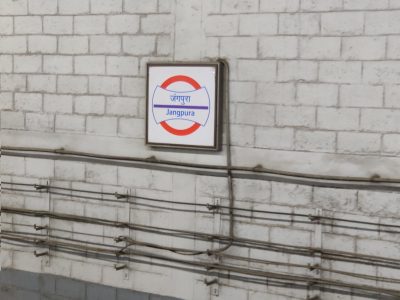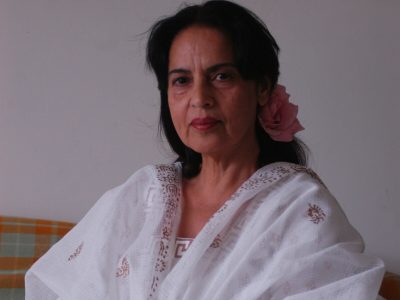Not frequently does South Delhi’s Jangpura find itself in the headlines for contentious matters, but it recently captured national attention when Suranya, daughter of Congress leader Mani Shankar Aiyar, was reportedly asked to leave her house by the Resident Welfare Association (RWA) due to posts on social media where she questioned the Pran Prathistha ceremony of the Ram Mandir in Ayodhya.
However, Suranya has denied receiving any notice from the RWA, and the dispute appears to have settled relatively quickly after an initial flare-up.
Jangpura’s name might evoke images of a battleground to many, but fortunately, the area has no association with war or conflict.
What’s in the name!
The origins of the name Jangpura are rooted in an intriguing history, which leads us to Lodhi Garden. To unravel this history, a visit to Lodhi Park is necessary.
Upon entering Lodhi Park from Rajesh Pilot Marg (formerly South End Road), a small gate leads the way. Just outside this gate, a plaque reveals the area’s history. It was once known as Willingdon Park before being renamed Lodhi Garden after 1947. The plaque also indicates that Khairpur village once occupied this land before being displaced to make room for the park. The villagers were resettled in ‘Youngpura’ in the early 20th century under the supervision of British officer Charles Young.
Thus, what was initially named ‘Youngpura’, later became known as Jangpura over time, to the credit of the villagers.
Fast forward to post-1947: Jangpura remained a relatively nondescript locality until the partition of India, when it became a haven for hundreds of Hindu and Sikh refugees from Punjab, particularly Rawalpindi.

Many residents of Jangpura still vividly recall the horrors of the Partition and subsequent events like the 1984 anti-Sikh riots, which continue to haunt their memories.
Former Mayor of Delhi, Farhad Suri, intimately familiar with Jangpura due to its inclusion in the Darya Ganj constituency, describes it as a symbol of communal harmony. Mandir Marg, Church Road, Masjid Road, and Gurudwara Road all intersect in Jangpura, alongside the presence of the Buddha Vihar, highlighting its inclusive nature.
Renowned figures like former Doordarshan news anchor Salma Sultan and Odissi dancer Sharon Lowen have chosen to reside in Jangpura, a testament to its appeal as a living space. Notable artists like MF Hussain and Ram Kumar have also called Jangpura home in the past.

Refuge for the lorn
Over the last two decades, Jangpura has emerged as a hub for Afghan refugees in Delhi, with numerous Afghan families settling in the area. The bustling market of Jangpura hosts an Afghan community school, Anjam Knowledge House, founded by refugee Ahmad Khan Anjam, aimed at providing education and support to fellow refugees.
Several eateries run by Afghans have sprung up in Jangpura, serving delectable dishes like Afghani burgers, chicken kebabs, and mutton korma, reflecting the area’s multicultural flavour.
“They are serving delicious food with a variety of options such as Afghani burger, chicken kebab, mutton korma, and tandoori roti. When some guests visit my place, I order food from these Afghan restaurants,” informs A Makhijani, an old resident of Lajpat Nagar.

Additionally, the Jain community holds a significant presence in Jangpura and Bhogal, with around 400 Jain families in the area. Samman Bazar, a prominent market in Bhogal-Jangpura, owes its name to Samman Lal Jain (26.8.1869 – 26.10.1956), a prominent landlord of Jangpura who played a pivotal role in the area’s development.
“Samman Lal Jain’s family was originally from Arab Ki Sarai near East Nizamuddin. The government took over the vast lands, which he owned in South Delhi, after Delhi became the capital of India in 1911. He received massive funds from the government in lieu of his land that was acquired and built Sri Mahaveer Digamber Jain Kanya School in 1923,” informs Surendra Jain, kin of Samman Lal Jain.
As one strolls through Jangpura, it becomes evident that even minor incidents can spark significant discussions in today’s age of social media.





